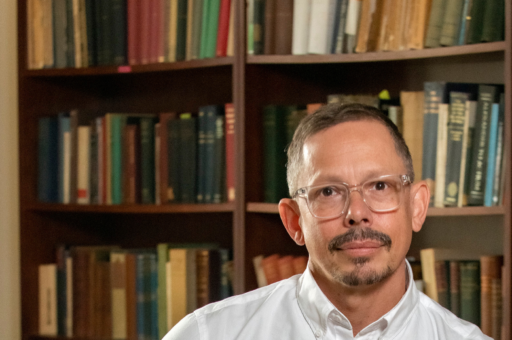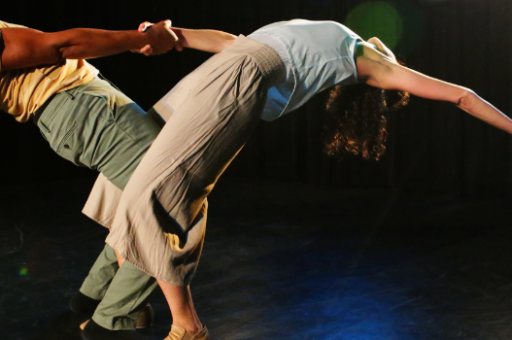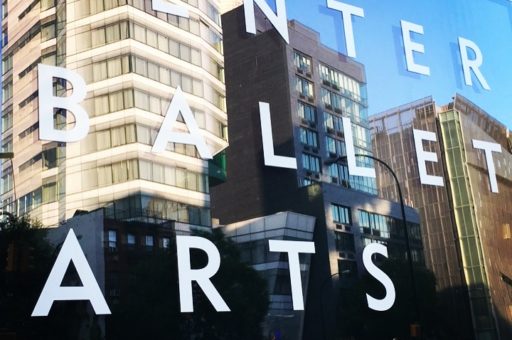Claire Bishop (CBA ’18) is a professor in the PhD Program in Art History at the Graduate Center, City University of New York. Her books include Installation Art: A Critical History (2005) and Artificial Hells: Participatory Art and the Politics of Spectatorship (2012), for which she won the 2013 Frank Jewett Mather award, and Radical Museology, or, What’s Contemporary in Museums of Contemporary Art? (2013). She is a regular contributor to Artforum, and her essays and books have been translated into eighteen languages. Her current research concerns the impact of digital technology on contemporary art and performance since 1989, and is funded by an Andy Warhol Foundation Arts Writers Grant.
For more about Bishop’s CBA Fellowship, visit her fellow page.
Please briefly describe your CBA Fellowship project.
My goal was to kick-start a research paper on the history of Merce Cunningham’s Events – ninety minute remixes of pre-existing repertory that he produced from 1964 until his death in 2009. As I spent more time in the Cunningham Archive at the Library for Performing Arts, however, my initial plan to write a history of the Events shifted into a broader set of arguments about their pragmatic function (serving different purposes during each decade of the company), their relationship to chance and indeterminacy (there is none), and Cunningham’s use of technology, especially television and sound mixing, as analogues for the structure of Events.
How does your understanding of the Events differ from current scholarship?
The Events are currently subject to two or three misperceptions, which I’ve hinted at above.
Firstly, the idea that they mainly took place in art galleries. While the first four did take place in museums, and certainly owed a great deal to this context, many more took place in other types of venue. In the late 60s/early 70s this tended to be college gymnasia, and occasionally public space (eg Piazza San Marco in Venice, 1972); during the 1970s a significant number were done in the studio at Westbeth; throughout the 1980s and 1990s the majority were performed in proscenium theatres (as a low-budget alternative to repertory productions). In the last decade, museums came back into the frame, with high-profile Events at Tate Modern, Dia: Beacon, etc., through which Cunningham explored the multi-stage format.
Secondly, it is often thought that the Events were composed by chance. By studying Cunningham’s Event Orders (the sheets of paper on which he worked out the order of each evening’s Event), we can see that they were in fact carefully composed. For all Cunningham’s radicality in decentralizing stage space, the Events were in fact composed with fairly classical notions of contrast and variation.
Thirdly, it has often been said that the Events are the choreographic equivalent of collage and assemblage, probably as a result of Cunningham’s close association with Robert Rauschenberg. But by looking at Cunningham’s references to technology (through his lecture-demonstrations and writings of the 1960s), we can see that a more apt media through which to understand the Events are television (for a model of ongoing continuity) and sound mixing in music (as a model for reorganizing one’s own material). Throughout his career, Cunningham was abreast of new technological developments; television and sound mixing allow us to understand that recombinatory approach as internal to his choreography (a kind of self-cannibalism), rather than integrating heterogeneous elements (as in collage/assemblage).
What was Cunningham’s relationship to art forms other than dance? How did that influence his work?
Cunningham is best known for his close collaboration with composer John Cage (who was the company’s music director for many decades) and thus for his use of experimental music. I argue that Cage’s idea of the ‘mix’ (which appears in the title of three major compositions) is central to Cunningham’s conceptualization of Events.
Also well known are Cunningham’s many collaborations with visual artists—from Rauschenberg and Jasper Johns through to a younger generation in the 2000s (Olafur Eliasson, Ernesto Neto, etc). But these were never close collaborations: in a Cunningham production, music, sets, costumes, and choreography are all seen as independent elements. There is no integral relationship between them, just a simultaneous coexistence in time and space. As we find so often with Cunningham, he is both radical (de-centring meaning) and traditional (continuing a genealogy of choreographic collaborations with visual artists going back to the Ballets Russes).
Other than a lifetime of conversation with Cage, I don’t think the collaborations with visual artists influenced Cunningham’s choreography in any significant way; he was quite single-minded in his focus on dance.
What have been some of your most interesting learnings during your fellowship?
The CBA Fellowship connected me to the Cunningham Foundation, who put me in touch with former dancers who performed at different moments of the company’s history—from the 60s (Valda Setterfield, Douglas Dunn) to the 2000s (Rashaun Mitchell, Silas Riener). It was illuminating to get the dancers’ take on the Events, and to see how widely their stories differed.
How do you see your project evolving beyond your CBA Fellowship?
What I thought was going to be a straightforward history of the Events has turned out to be much more complicated. Moreover, the Common Time exhibition catalogue (accompanying the Cunningham retrospective at the Walker Arts Center last year) has done the job of laying out the basic territory, which allows my project to be more ambitious. I tend to be very fast at writing a first draft, but the work of finessing an argument seems to take forever. I hope to finish the article by the end of this year and get it published in 2019, in time for the Cunningham centenary.




